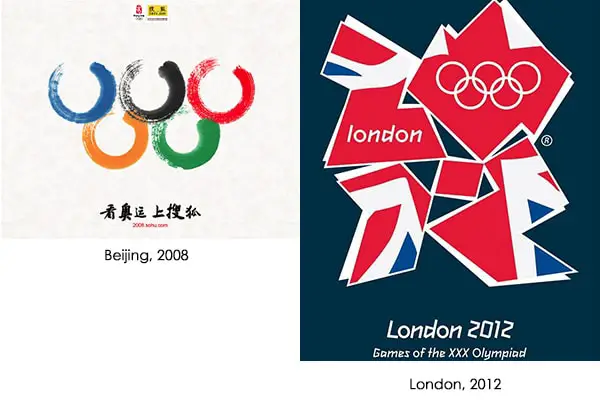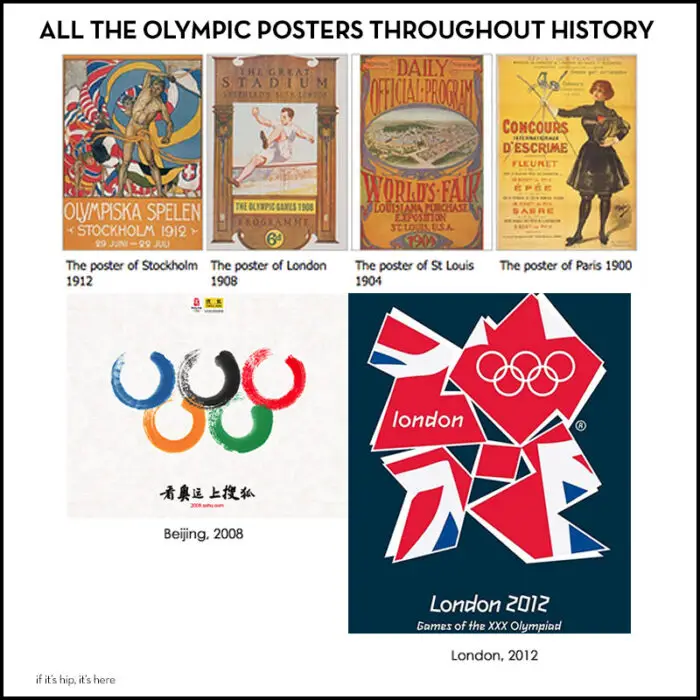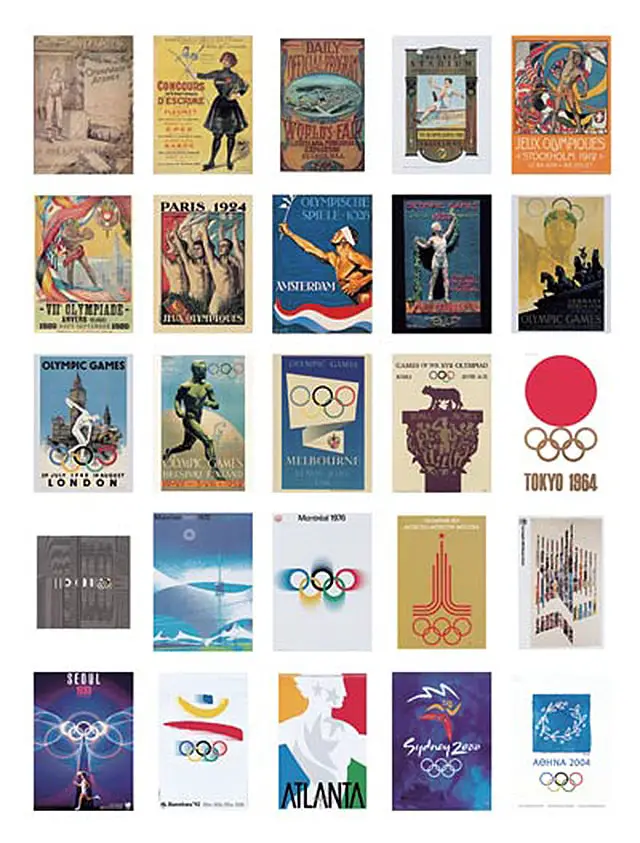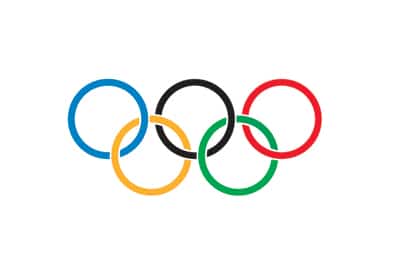The 2008 Olympiad games begin this week in Beijing and so I thought I’d take this opportunity to share with you some fun Olympic design history as well as some present Olympic design-related news all this week. Today we’ll start with the Olympic Posters, and the meaning behind the five rings.
Olympic Posters Throughout History
*No official poster was made for the 1896 Olympic Games, but the cover page of the official report is often used to refer to the Games of the I Olympiad. The inscription “776-1896”, like the drawing as a whole: the Olympic stadium in a newly designed horseshoe shape, the Acropolis, the girl personifying the goddess Athena and presenting the branch of wild olive intended for the victor, mark the bond between the Games of Antiquity and the first Games of the modern era.
Below are the posters from both the Summer and the Winter Olympiad Games throughout history.

A collection of official posters from past Olympic Games will go on sale here on August 5. Approved by the International Olympic Committee, each set contains 25 posters, covering every edition of the Olympic Games from 1896 to 2004.
Printed on acid-free paper, each poster measures 500mm X 700mm.
Buy them here after August 5th.
A little background on the Olympic Rings for you:
“These five rings — blue, yellow, black, green and red — represent the five parts of the world now encompassed by Olympism and ready to compete against each other. Moreover, the six colours (including the white background) thus combined represent those of all nations, without exception. The blue and yellow of Sweden, the blue and white of Greece, the French, English, American, German, Belgian, Italian and Hungarian tricolours, the yellow and red of Spain are side by side with the new Brazilian and Australian flags, the old Japan and the new China. It is a true international emblem.”
Coubertin (Selected Writings II, p. 460, 1913).
As an image of Olympism, Coubertin thought the rings had deep significance: that of the union between men. He multiplied the image to create a total of five rings. He designed and commissioned the Olympic flag to mark the 20th anniversary of the IOC’s founding, on 23rd June 1914 in Paris. Coubertin never said nor wrote that he saw a link between the colours of the rings and the continents. For him, the five rings represented the union of the five continents, but the colours were merely those that appeared in all the different national flags at the time.
Did You Know?
The results of a survey carried out in six countries (Australia, Germany, India, Japan, Great Britain and the USA) in 1995 showed that 92% of those questioned correctly identified the Olympic rings, which made them the most-recognized symbol in the world. They were followed by the McDonald’s and Shell emblems (88%), Mercedes (74%) and the United Nations (36%). source: SRI Sponsorship Research International













